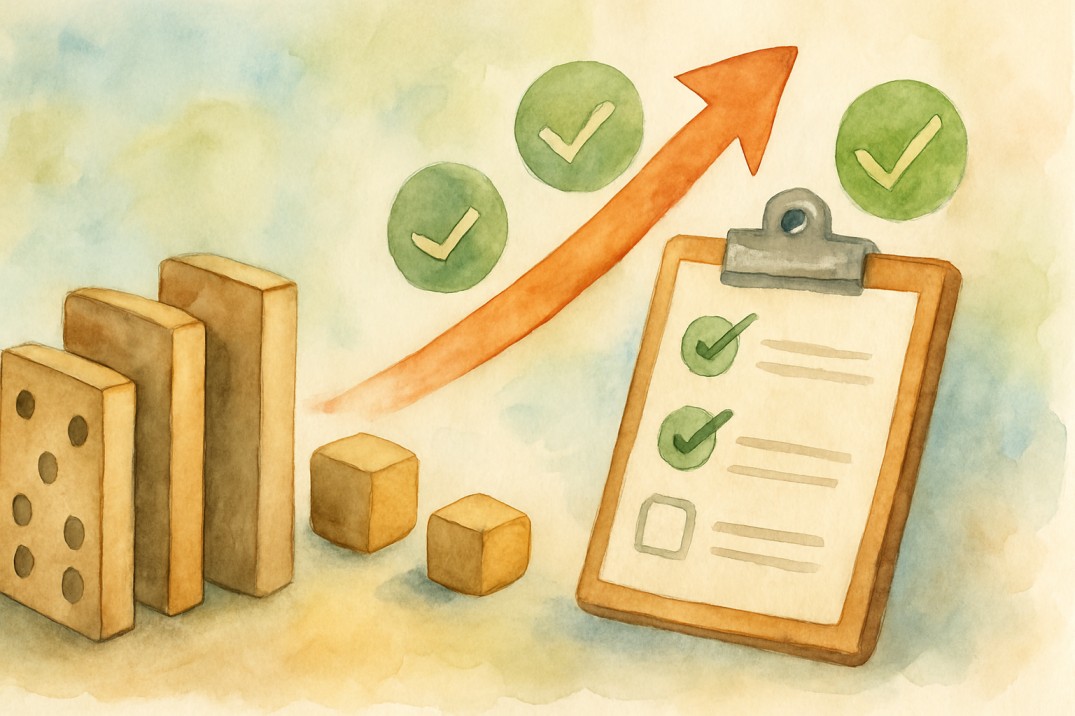Build Productivity Momentum: You Don’t Have To Do The Hard Stuff First
You’ve probably heard the classic advice: “Do the hardest thing first,” or “Eat the frog.” It’s a popular method, and yes, it works for a lot of people. But what if it doesn’t work for you? What if jumping straight into that big, daunting task actually slows you down or leaves you stuck? I’ve been there, and I want to share a way to work around that so you still get things done without the friction or paralysis that sometimes comes with tackling the “elephant in the room” right off the bat.
Why the “Eat the Frog” Method Isn’t Always the Best Fit
The “eat the frog” approach can be great when you’re motivated and ready to dive in. Some days, I wake up knowing exactly what the biggest task is, and I just go after it. Getting it done early feels like a win and sets the tone for the day.
But other days? I’m just not feeling it. Maybe I didn’t sleep well, or my energy is low. On those days, forcing myself to tackle the hardest task first can create a block. It feels like friction that slows everything down instead of speeding things up. Sometimes it’s about personality, sometimes it’s situational. The key is flexibility.
Prioritization Isn’t Just About the Hardest Task
Here’s something I want to stress: prioritization isn’t necessarily about doing the hardest thing first. It’s about doing the right thing to get you moving. Sometimes that means starting with smaller, easier tasks to build momentum.
Think of it like exercise. You don’t always start with a 5-mile run. Sometimes you just walk around the block, and if you feel good, you keep going. The same goes for productivity — start small, and let momentum carry you forward.
How to Build Momentum with Small Tasks
If you’re not feeling motivated, try what I call “momentum stacking.” Here’s how it works:
- Pick an easy task that actually needs to get done today. Maybe it’s a quick five-minute outline, or a two-minute email response.
- Batch a few of these small tasks together if you want — grouping similar things can reduce the mental load of switching between different types of work.
- Don’t use this as an excuse to procrastinate by doing busy work. Make sure these tasks are real, meaningful actions that move your day forward.
By knocking out these smaller tasks first, you build momentum and motivation to tackle bigger ones later. Even if you don’t get to the hardest thing right away, you’re still making progress.
Why This Approach Can Be So Helpful
When I’m low on energy or motivation, I toss out a lot of conventional productivity advice and focus on these small wins. It keeps me from getting stuck in that “oh, I should really do the laundry” or “I need to go to the store” trap — those are real tasks, but often not the right use of my time when I need to be productive.
Instead, I focus on small, important tasks that keep me moving forward. This approach helps me avoid beating myself up for not feeling motivated and keeps me productive in a way that feels manageable.
Putting It Into Practice: A Simple Daily Checklist
Say you have three to five tasks on your plate, and one or two are pretty big. If you’re just not feeling it, here’s what you can try:
- Pick one of the smaller tasks.
- Commit to doing just that one first.
- After finishing it, check in with yourself — how do you feel?
- If you’re up for it, move on to the next task, maybe something a bit bigger.
Even if you end up only completing that small task, you’ve still made progress. And often, that small momentum is enough to get you rolling on the bigger stuff.
Using Reminders to Keep This Strategy Top of Mind
This method can be easy to forget when you’re caught up in your day. Sometimes I write myself a reminder or leave a note in my task list to try momentum stacking when motivation is low.
Maybe watching this and reading this now will stay in the back of your mind as a gentle nudge: “Hey, if today feels tough, start small, build momentum, and see where it takes you.”
When to Use This Approach
I especially lean on this method when I’m traveling, not feeling well, or just having one of those low-energy days. It’s a backup plan that keeps my productivity moving without the pressure of jumping straight into the hardest or biggest task.
Give it a try for a week or so, especially on days when motivation isn’t high. See how it feels and what kind of momentum you build.
Wrapping Up
So, whether you’re a die-hard “eat the frog” fan or someone who needs a gentler way to get started, remember this: productivity is personal. It’s about finding what works for you on any given day.
Starting with small wins to build momentum can be just as powerful as tackling the hardest task first. And sometimes, it’s exactly what you need to get going.






